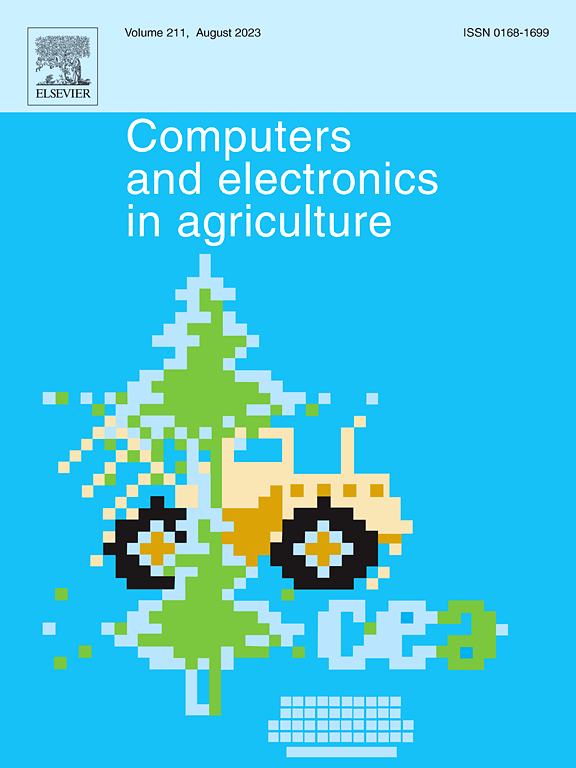A comprehensive review of advances in sensing and monitoring technologies for precision hydroponic cultivation
IF 8.9
1区 农林科学
Q1 AGRICULTURE, MULTIDISCIPLINARY
引用次数: 0
Abstract
Hydroponic crop cultivation systems are a key component of controlled environment agriculture (CEA), where precision nutrient management is essential for sustainable plant growth and optimal yields, particularly in recycled hydroponic systems. Traditional methods, such as visual diagnosis of nutrient deficiencies or toxicities, are often delayed and prone to misinterpretation due to overlapping symptoms. Moreover, similar symptoms caused by different nutrient deficiencies can lead to confusion and result in incorrect nutrient replenishment. Although electrical conductivity (EC) based nutrient management techniques can be applied for online nutrient management, they only provide information about the overall ion concentration, limiting individual ion identification and quantification. Moreover, fluctuations in pH levels affect the availability of several ions by inducing precipitation or dissolution reactions. Ion-specific sensing techniques can play a vital role in overcoming these limitations. This article aims to provide a comprehensive overview of various sensing/monitoring technologies for precision nutrient management from an application perspective. Nowadays, ion-selective electrodes (ISEs) are widely investigated in hydroponic applications due to their sensing capabilities, real-time functionality, robustness, low cost, and calibration needs. This study discusses the factors affecting the sensing performance of different sensors, especially ion-based sensing, and commercial tools available in hydroponic operations. The review identifies future research priorities to enhance nutrient monitoring and decision-support systems for precision hydroponic nutrient management. This work aims to serve as a valuable resource for researchers and practitioners in advancing hydroponic sensing technologies.

精密水培栽培传感与监测技术进展综述
水培作物栽培系统是控制环境农业(CEA)的关键组成部分,其中精确的养分管理对于植物的可持续生长和最佳产量至关重要,特别是在循环水培系统中。传统的方法,如营养缺乏或毒性的视觉诊断,往往是延迟和容易误解,由于重叠的症状。此外,不同的营养缺乏引起的类似症状可能导致混淆,导致营养补充不正确。尽管基于电导率(EC)的养分管理技术可以用于在线养分管理,但它们只能提供总体离子浓度的信息,限制了单个离子的识别和定量。此外,pH值的波动通过诱导沉淀或溶解反应影响几种离子的可用性。离子特异性传感技术可以在克服这些限制方面发挥至关重要的作用。本文旨在从应用的角度全面概述各种用于养分精确管理的传感/监测技术。目前,离子选择电极(ISEs)由于其传感能力、实时功能、鲁棒性、低成本和校准需求而在水培应用中得到了广泛的研究。本研究讨论了影响不同传感器传感性能的因素,特别是离子传感,以及水培操作中可用的商业工具。综述确定了未来的研究重点,以加强营养监测和决策支持系统的精确水培养分管理。这项工作旨在为研究人员和实践者提供有价值的资源,以促进水培传感技术的发展。
本文章由计算机程序翻译,如有差异,请以英文原文为准。
求助全文
约1分钟内获得全文
求助全文
来源期刊

Computers and Electronics in Agriculture
工程技术-计算机:跨学科应用
CiteScore
15.30
自引率
14.50%
发文量
800
审稿时长
62 days
期刊介绍:
Computers and Electronics in Agriculture provides international coverage of advancements in computer hardware, software, electronic instrumentation, and control systems applied to agricultural challenges. Encompassing agronomy, horticulture, forestry, aquaculture, and animal farming, the journal publishes original papers, reviews, and applications notes. It explores the use of computers and electronics in plant or animal agricultural production, covering topics like agricultural soils, water, pests, controlled environments, and waste. The scope extends to on-farm post-harvest operations and relevant technologies, including artificial intelligence, sensors, machine vision, robotics, networking, and simulation modeling. Its companion journal, Smart Agricultural Technology, continues the focus on smart applications in production agriculture.
 求助内容:
求助内容: 应助结果提醒方式:
应助结果提醒方式:


